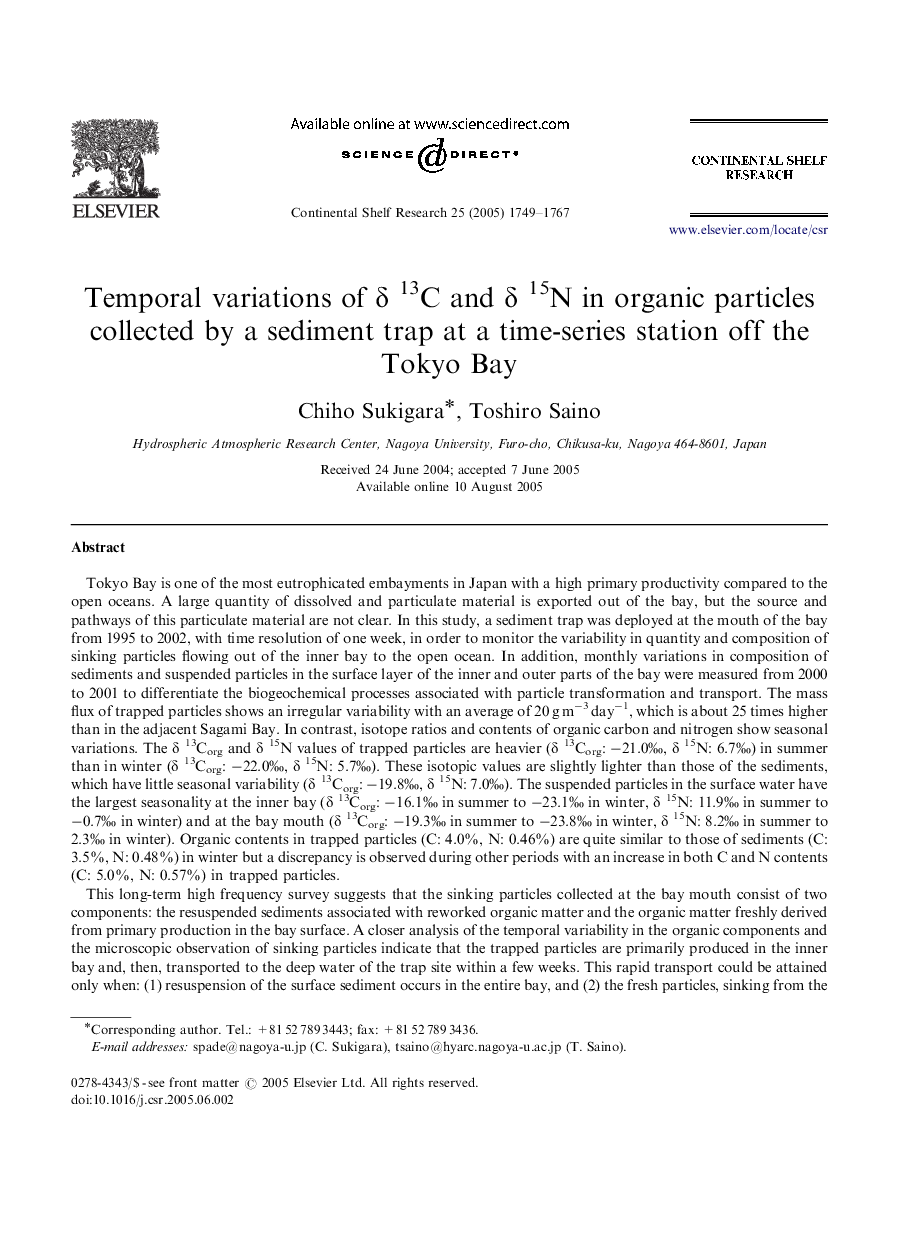| Article ID | Journal | Published Year | Pages | File Type |
|---|---|---|---|---|
| 9479097 | Continental Shelf Research | 2005 | 19 Pages |
Abstract
This long-term high frequency survey suggests that the sinking particles collected at the bay mouth consist of two components: the resuspended sediments associated with reworked organic matter and the organic matter freshly derived from primary production in the bay surface. A closer analysis of the temporal variability in the organic components and the microscopic observation of sinking particles indicate that the trapped particles are primarily produced in the inner bay and, then, transported to the deep water of the trap site within a few weeks. This rapid transport could be attained only when: (1) resuspension of the surface sediment occurs in the entire bay, and (2) the fresh particles, sinking from the surface water, mix rapidly with the resuspended sediments and convey the temporal signal in the fresh particles to the trapped materials. It is not possible to discover the existence of such mechanism without the long-term high-frequency observation.
Keywords
Related Topics
Physical Sciences and Engineering
Earth and Planetary Sciences
Geology
Authors
Chiho Sukigara, Toshiro Saino,
